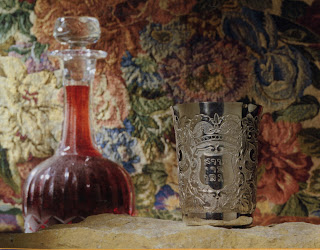The Feasts of YHWH (Continued)
The Passover (Continued)
At the time of the incarnation, the Rabbis taught that there were three things included in the command to appear before the Lord.
(1) Every male had to come up to Jerusalem.
(2) Every male had to offer a peace offering (chagigah).
(3) All Israel had to offer with a joyous heart.
The chagigah (peace offering) was to be in two parts.
(1) The first was offered on the evening of the Passover and could be included in the Passover meal where the lamb was insufficient for the whole company.
i. It could not be taken from anything already earmarked for the Lord, that is, tithes, offerings or things devoted.
(2) The second was offered on the first day of the feast of unleavened bread,
a. It could be taken from those things already devoted to the Lord.
At the time of the Messiah, the usual practice required a representative from each group to attend at the Temple with the receipt for a lamb previously purchased or brought. They would join the queue of celebrants in the court of prayer, and gradually climb the fifteen steps of ascent that led to the platform in front of the great Nicanor doors that separated the court of prayer from the court of priests. In groups of between thirty and fifty they were allowed into the court of priests.
Each of them received a lamb in exchange for their receipt, and when instructed by the priest, killed this lamb while the priest caught its blood in a vessel without a base and without a brim. The vessel containing the blood of the lamb was passed along a line of priests until it reached the priest at the altar who would dash the blood below the crimson line. There were two rows of priests engaged in this duty. One row had golden vessels, and the other row had silver vessels. Gold symbolized the glory of God (the furniture in the Holy Place and the Holiest of all was either cast in gold or covered in gold); while silver symbolized redemption (atonement) (the redemption money was silver).
Each gutted his lamb, disposed of the entrails and placed the sacrificial portions on a tray for the priest to burn them on the altar fire. They then hung the carcass on one of the hooks set into the walls and pillars and skinned the lamb. Where there were not enough hooks, the Temple authorities provided smooth wooden staffs, which could be used on the shoulders of two, to hang the dead lamb, or if the celebrant had no partner, he could stand it on end to flay the animal.
While this was going on, the Levitical choir led the singing of the Hallel (Psalms113 to 118). Those that were engaged in the ritual, sang the responses. They sang the Hallelujahs (Praise ye the Lord); the Hosannas (Save now, I beseech thee), and most significantly, ‘Blessed be He that cometh in the name of the LORD’. If the ceremony was not concluded by the time the choir had completed the Hallel, they began again at Psalm 113.
Each took the lamb and fleece to the place that had been prepared for the feast. Those that provided a room for visiting pilgrims were not allowed to charge, but custom allowed for the fleece to be set aside as a gift to them in gratitude for their hospitality. All over Jerusalem, and in front of a multitude of tents erected on the Mount of Olives, lambs were roasted on wooden spits of pomegranate wood, the spit passing through from mouth to buttocks.
In addition to the lamb there were other items needed for the meal.
(1) First unleavened bread, symbol of their redemption from Egypt. To qualify the bread had to fulfill three conditions.
(a) It had to be unleavened (obviously). Biblically, leaven represents sin or in some instances, error.
 |
| Present day Matzos |
(c) It had to be pierced) the bread was truly unleavened.
(2) Next they needed bitter herbs, to remind them of the bitterness of the slavery in Egypt. They would use lettuce, chicory, pepperwort, endives, and dandelion.
(3) In addition, they needed haroset (a relish made of fruits and spices with vinegar or wine, used to sweeten the bitter herb at the meal) (it should have the appearance and consistency of mortar reminding them of the brick making in Egypt).
(4) They also needed wine that had been mingled with water. If the wine was not mingled with water, the responsibility of the company was not discharged.
There were four cups of wine required.
(1) The first was the cup of thanksgiving. The leader at the feast pronounced a thanksgiving for the day, and a thanksgiving for the fruit of the vine. The Mishnah instructs, ‘When they have mixed the first cup of wine— “He says a blessing over the day, and afterward he says a blessing over the wine.”
(2) The second was the cup of redemption signifying their redemption from Egypt.
(3) The third was the cup of blessing, for a special blessing was said for the food.
(4) The fourth was the cup of praise for it was associated with the singing of the Hallel (Praise).
While there was some liberty to add other traditional customs, the central elements of the meal were inviolate.





No comments:
Post a Comment